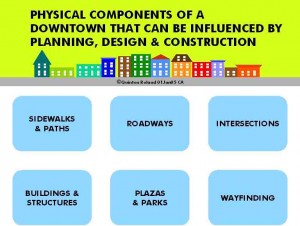httpv://www.youtube.com/watch?v=9H4u-trTvNk
New York City politics is often about real estate value, and distance is often measured in travel time. A hospital three miles away in suburban or rural Arizona might be reachable, on a flat straight road with no traffic, in an ambulance with lights and sirens running, in well under three minutes. Not in New York City.
In 2010, in financial trouble after serving the sick and dying for 161 years, a deal was brokered – the details don’t matter – in which the overwhelming majority of the hospital’s grounds would be replaced by luxury housing, plus the fig leaf of an “urgent care center,” which, it was implied, was the functional equivalent of a hospital emergency department. St. Vincent’s did have, while it was in operation, a full-on top tier emergency department, with specialists, operating rooms – like, in fact, a fully accredited emergency department designated as a trauma center in a major American city. The replacement “urgent care center” – to be frank, this phrase as used is more deceptive than illustrative – would not, is not, and will not be able to treat gunshot wounds, heart attacks – those patients will have to be transported to the nearing hospital designated, accredited, equipped and trained as a trauma center.
So the people buying this “luxury” housing will be buying housing without one of the characteristic amenities of modern big cities: outstanding hospitals with emergency departments. Unless, of course, they’re lucky in avoiding traffic, or in good enough shape to withstand a long ride in an ambulance. It is not without some shame that we note that New Yorkers, whatever their other virtues, are inured to the signals of emergency vehicles: we don’t rapidly pull over to make way for ambulances, police vehicles, or fire trucks. Our chronic housing shortage being what it is, people will undoubtedly buy or rent apartments on the former St.Vincent’s site anyway, but we wonder if the lack of a readily available emergency room will affect prices. From http://healthcarevote2013.com:
Few healthcare issues are as urgent in New York City as hospital closures. The Year Of The Healthcare Vote 2013 was created in response to the closure of St. Vincent’s Hospital in 2010. St. Vincent’s had served New York for 161 years, and will be replaced by luxury condominiums. Since that time hospitals have been closing at an alarming rate throughout New York City – in particular those that serve working and middle class New Yorkers.
In 2013 New Yorkers will choose a new Mayor, 51 members of City Council, a Comptroller, a Public Advocate and five Borough Presidents. Access to quality healthcare is a life and death concern for New Yorkers; Healthcare Vote 2013 will bring awareness and accountability to healthcare issues in New York City’s upcoming elections.
Healthcare Vote 2013 will work to advance discussions on all healthcare issues important in our communities and ask candidates to pledge to preserve publicly accessible hospitals and expand public healthcare in the neighborhoods they represent including restoring a hospital to the Lower West Side of Manhattan.
Please get involved.

